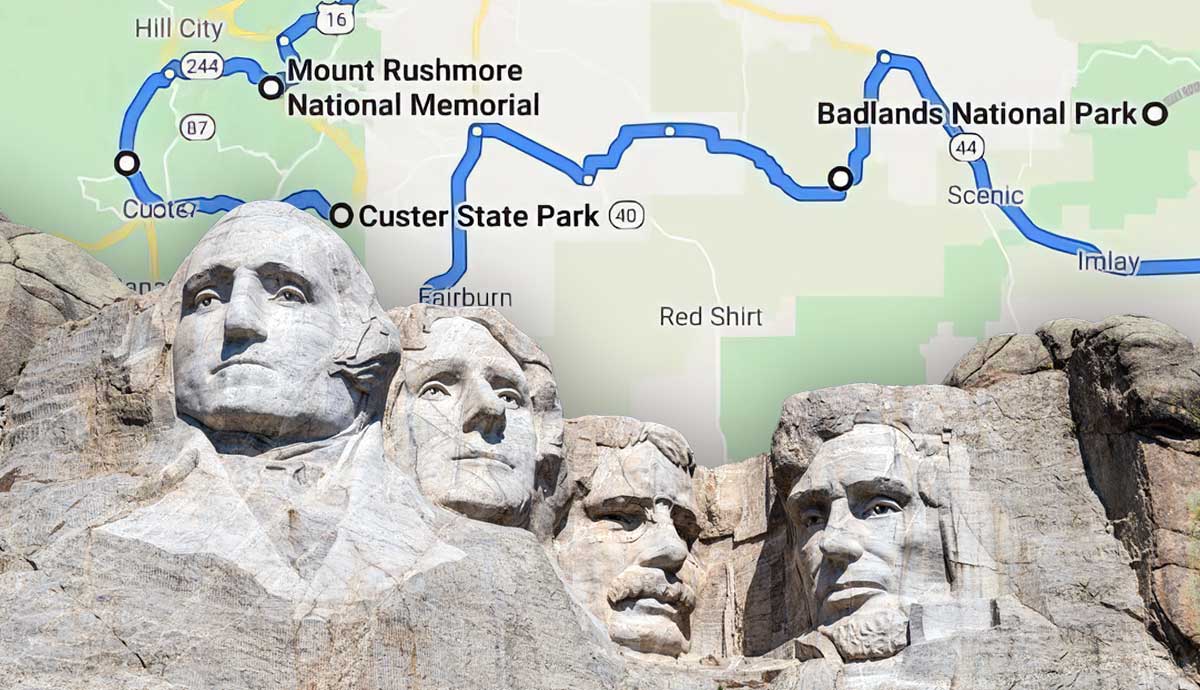
The history of Mount Rushmore can be traced back to a proposal by an amateur historian from South Dakota. Inspired by the creation of a Confederate memorial on the side of Stone Mountain, near Atlanta, Georgia, Doane Robinson reached out to the sculptor, Gutzon Borglum, and shared his vision for a monumental sculpture in the Black Hills of South Dakota. With Borgulm at the helm and the backing of the South Dakota State Legislature and United States Congress, Robinson’s idea evolved into the now iconic depiction of four US presidents on Mount Rushmore.
Doane Robinson: The Father of Mount Rushmore

The story of the Mount Rushmore National Memorial begins with Doane Robinson, a South Dakotan lawyer and amateur historian. In 1901, Robinson became the first Executive Secretary of the South Dakota Department of History. His contributions to the history of South Dakota were profound. Robinson wrote books, including a comprehensive encyclopaedia of the state, collected and edited records for the state archives, and generally speaking, promoted the heritage and history of South Dakota to the nines.
Upon reading about plans for a giant Confederate Memorial Sculpture on the side of Stone Mountain, Georgia, Robinson was inspired to develop a sculpture project around The Needles, a region of eroded granite pillars in the Black Hills of South Dakota.
Robinson envisioned a sculpted likeness of eminent figures of the Old West as a lure to generate tourism in the state. In a bid to realize his vision, in 1924, he got in touch with the sculptor behind the Stone Mountain project, Gutzon Borglum.
Gutzon Borglum

Robinson’s choice of Gutzon Borglum as sculptor remains highly controversial to this day. The Sculptor of Mount Rushmore – The Shrine of Democracy – not only also worked on the “Shrine to the Confederacy” on Stone Mountain, Georgia, but was deeply involved in the politics of the Klu Klux Klan.
In his career as a historian, Doane Robinson showed an inclusive attitude to native Americans regarding the history of South Dakota. However, he was also a firm believer in manifest destiny and referred to the Sioux in various writings as “primitives, barbarians, and savages”. However, while Robinson’s primary motivation was tourism, Borglum’s vision was of an overt monument to the power of white America.
Borglum and his team quickly rejected Robinson’s initial idea to carve the likeness of characters from the Old West into The Needles and replaced it with a plan to carve four former US Presidents – Washington, Jefferson, Roosevelt, and Lincoln – on the far grander site of Mount Rushmore.
Opposition to the Monument

Opposition to the monument emerged in two distinct forms. Preservationists, exemplified by figures such as the journalist Cora Babbitt Johnson, opposed the destruction of pristine natural landscapes for the sake of tourism. Simultaneously, Native American communities with deep roots in the Black Hills decried the proposal as a desecration of their sacred ancestral lands. Furthermore, they denounced the records of anti-indigenous policies of the four presidents chosen for the sculpture as offensive in the extreme.
Native American criticism was amplified by the fact that the land in question – the Black Hills – legally belonged to the Great Sioux Nation, pledged to them ‘in perpetuity’ according to the Treaty of Fort Laramie (1868), but since illegally occupied by the United States. In this regard, Mount Rushmore, for many Native Americans, was – and remains – a symbol of broken treaties, structural racism, and the pervasive influence of white supremacy in the United States.
Dedicating the Monument

Following Doane Robinson’s initial proposal for a sculpture in the Black Hills in 1923, and his successful recruitment of Gutzon Borglum to the cause in 1924, momentum for the project surged with the passage of legislation in both South Dakota and the United States Congress in 1925.
Two bills, seeking the allocation of federal land for the project were drafted and presented to each legislative body. The Congress bill passed swiftly with minimal resistance while the South Dakota bill faced more significant challenges. It was defeated twice before narrowly passing on its third attempt. Mount Rushmore was officially desiccated as a National Monument on 1st October 1925.
In August 1927, US President Calvin Coolidge attended the first ceremonial drilling at Mount Rushmore. In his speech, he promised federal funding and presented Gutzon Borglum with a set of drill bits. The actual carving began on October 4th of that year and was finally concluded precisely 14 years and 27 days later on 31st October 1941.










